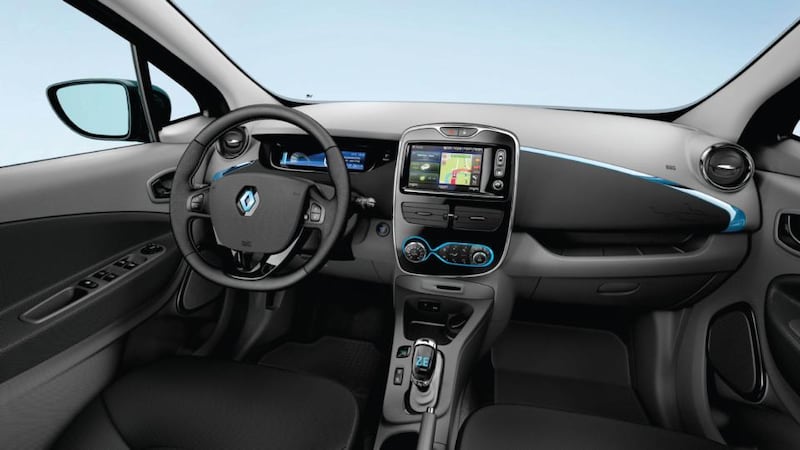The problem is range anxiety. I have to stick my hands up for a quick mea culpa here. I don't have an external, wall-mounted charging point on my house. I know, I know – excuses, but, hey, I'm moving house, so there wouldn't have been any point in getting one installed.
So the Renault Zoe and I had to go on a 30km round trip every time I needed to charge it. That meant I was knocking a potentially precious 15km off my full-charge range every time I plugged in. True, if I'd had the wall box that wouldn't have happened, but it still shows that the charging network is on the sparse side of things. It's not as if I (currently) live out in the sticks – I'm 25km from Dublin Airport.
Mind you, the Zoe has pretty decent range if you believe the official NEDC European test figures. According to them, the Zoe can squeeze 210km from a single charge, putting it well ahead of the likes of the Nissan Leaf or even the high-tech BMW i3. The slight problem is that, even at 100 per cent charge, I couldn't get the Zoe to display more than 137km of range on its TFT digital-display dashboard.

That’s a low enough figure to get me sweating, so I drove everywhere with one eye glued to the distance-to-recharge display. It was like driving a conventional car with the low-fuel warning light permanently on – not relaxing and not fun.
Which is a shame, because the Zoe should at least be relaxing. It rides mostly comfortably; it has light, distant steering, so you don’t bother trying to drive it on the door handles; and the cabin is airy, comfy and pleasant.
Our €19,000 Dynamique Intens test car came with a central touch screen through which you can monitor the car's energy usage and call up a satnav map that shows you where charging stations are – theoretically, anyway: the map in our car wasn't working, so it was back to good old Google Maps on the iPhone.
Battery lease Although the base price of the Zoe (€17,490 once you factor in Government-sanctioned grants and VRT) is temptingly low by electric-car standards, you have to pay extra for the batteries, in a monthly leasing fee. This is Renault's way of keeping the headline price low. Its argument is that the €49 (for low-mileage drivers) or €79 (for higher mileages) you pay every month is as cheap or cheaper than a tank of fuel for a similarly sized Fiesta or Yaris.
Besides, leasing the batteries means they can be replaced more simply if a clever new whizz-bang battery comes along. And the Zoe murders any conventional car in a price- per-kilometre rating.
For between €2 and €4 (depending on where and when you charge) you can get at least 160km out of the Zoe; €2 worth of petrol or diesel – not even a litre and a half – would probably get you only 30-40km in most cars.
But there’s still the range anxiety. You still – or at least I still – drive as if the batteries are going to go pop at any second.
That you can routinely squeeze more range out of the Zoe than the dashboard tells you that you can is no help. The thought at the back of your head is always, What if the computer is right this time? And don’t even ask about what happens when you switch the air conditioning on. Sweaty stuff.
The Zoe, good to look at and inoffensive to drive, is a solid enough little proposition, but only to a very narrow band of potential customers. If your lifestyle and driving habits perfectly mesh with it, then it's good. The rest of us are still awaiting a truly practical, multipurpose electric car.








